CYBERCRIME AS A SERVICE (CCAAS)
CCAAS depicts an organised business model where cybercriminals, malware developers, and other threat actors sell their cybercrime services to potential customers. Virtually anyone can now embark on a cyberattack or participate in cybercrime because CCAAS makes it easy for them to access an expert cybercriminal’s services, expertise or tools. The “customer” does not need technical knowledge or coding skills because their CCAAS vendor does all the groundwork required to launch a successful cyberattack with minimal effort quickly. Due to its shady and illegal nature, CaaS primarily operates on the dark web.
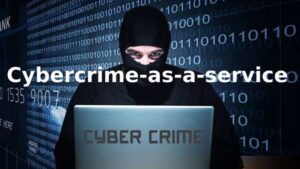
Cybercrime as a Service – CCAAS – or the sale of criminal services to the public is a type of Cybercrime that involves the use of remote access tools to conduct illegal activities on behalf of an individual or organization. CCAAS is a severe threat because it enables cyber criminals to act with virtually no risk of getting caught or punished for their actions. CCAAS vendors or suppliers organize themselves like legitimate businesses with a clear hierarchy of personnel: engineers, leaders, developers, money mules, and tech support representatives. The latter’s services help customers work through the technical aspect of the attacks. They can walk customers through the process of using the “product”.
Cyber-criminal hacking operations are now so competent that nation-states are deploying CCAAS to carry out attacks on their behalf to keep their involvement hidden. A document by cybersecurity researchers at BlackBerry informs that the emergence of sophisticated cybercrime-as-a-service schemes implies that nation states increasingly have the choice of working with groups that can carry out attacks for them.
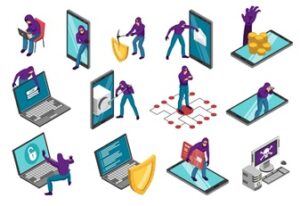 The main goal of a CCAAS agency is to grow its business by selling its services. Suppliers hire engineers, developers, and leaders to create and maintain websites, software applications, and other technologies that enable them to commit crimes. Suppliers also hire money mules to receive customer payments and transfer the money to their accounts.
The main goal of a CCAAS agency is to grow its business by selling its services. Suppliers hire engineers, developers, and leaders to create and maintain websites, software applications, and other technologies that enable them to commit crimes. Suppliers also hire money mules to receive customer payments and transfer the money to their accounts.
CCAAS uses software and online services as their primary tool to conduct their activities. CCAAS also uses social media to reach clients. The range of services offered by CCAAS vendors is extensive and diverse. They range from hacking into email accounts to ransomware. CCAAS allows individuals to purchase the tools they need to commit crimes. For example, a cybercriminal may sell a software program enabling a buyer to steal someone else’s identity or credit card information. Tools such as these can be hazardous, especially if they fall into the hands of a malicious group or individual. CCAAS vendors provide benefits to anyone who wishes to hire them. They don’t require clients to reveal their identities.
In most cases, CCAAS is a form of organised crime, with groups of malicious actors working together to commit Cybercrime — much like traditional crime is conducted. Fewer malicious actors are involved in CCAAS, many of whom may be unaware that their activities are illegal. Cybercrime services are often advertised and sold online, usually on websites outside law enforcement’s reach. For example, a site may allow one to hide his online presence and browse the web anonymously. While it is entirely legal, it is also something that the police would like to shut down. Cybercriminals can sell VPNs and proxies, which are illegal, for malicious activities. Some other sites and marketplaces allow individuals to hire hackers to break into someone’s email or social media account. Individuals can also buy a fake ID or driver’s license from these sites.

Some products offered in the CCAAS market help steal money from the bank accounts of unsuspecting people. Buyers can use other products on this market to steal personal information and then sell that information to other criminals. Some CCAAS vendors offer products and services to protect against these threats.
These services get marketed to the public via the Internet, Dark Web, or other media. Most cyber criminals however often prefer to sell their services through marketplaces that are accessible to anyone. You don’t need any identification to purchase products through these websites. They don’t have any verification process, which makes them very easy to access. The cybercriminals and developers of services may advertise them as lawful or may disguise them as legitimate services. CCAAS offerings may be sold directly by the supplier or contracted through a third party. Some vendors may accept payment in cryptocurrency to avoid tracing. CCAAS may also market their offerings as privacy software, data security, ransomware protection, or other lawful services.
Some sell access to cybercrime tools, others offer consulting services to clients, and others provide a mix of these two. The main commonality of all CCAAS suppliers is their organization in a manner that would allow them to be charged with criminal activity if law enforcement were to take action against them.
To date, there is very little research on CCAAS and its impact on law enforcement and society. The lack of information on CCAAS makes it challenging to understand the scale and scope of the threat. It’s a big problem for police because it creates an opening for criminals to sell their services to the general public. They can do this through online marketplaces, websites, and social media.
These sites are easily accessible and allow people to purchase products that will help them commit cybercrimes. They can buy malware, bulk SIM cards, or proxy IPs. These products are widely available, and they are often very affordable. The availability of these products makes it much easier for people to commit cybercrimes. It also makes it much harder for law enforcement to catch criminals.
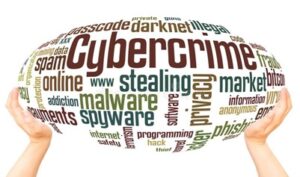
There are many types of CCAAS, ranging from malware delivery to information sharing. Malware delivery typically occurs through infected websites. Information sharing is the most common type of CCAAS. Threat actors share information to assist with the development of new malicious tools and techniques.
We have all heard of ransomware and other malware that holds a user’s files hostage until they pay a certain amount. The buying, selling, or leasing of malware is also a form of CCAAS. Cybercriminals may buy or lease exploits and then sell them to the highest bidder. There are many different types of CCAAS offerings. Some examples include remote access Trojans, botnets, spyware, ransomware, data stealers, and other malicious programs and scripts.
The buying and selling of exploits is also a type of CCAAS. Exploits are programs or scripts that take advantage of a computer, software bug, or vulnerability to cause problems. Cybercriminals can buy these exploits from their original creators or developers and then sell them to other cybercriminals who may find them helpful.Advanced attackers may also offer DDoS services, email spam services, or exploit kits for sale to anyone interested in purchasing them.
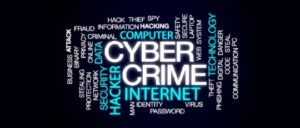
Examples of CCAAS might be selling remote access to a malware-infected computer, selling access to a botnet, or selling exploit kits. There are many benefits to selling your services through CCAAS, such as scaling your business as needed, choosing your customers, and avoiding the risk of getting caught. To stay safe, you must ensure that you are following best practices for selling your services.
These services may range from data exfiltration to ransomware, DDoS attacks, and other malicious activities. The main difference between CCAAS and different types of cloud hosting is that CaaS customers do not have legal rights to store data on the hosting platforms. CaaS providers typically lease virtual private servers (VPS) or physical servers that run decentralized software protocols like BitTorrent, Open Source Software (OSS), or other open source network protocols to deliver custom content. It is important to note that since these servers do not have any rights to store data, they can be shut down anytime without warning.
 As a result, CCAAS undermines law enforcement’s ability to fight crime and protect citizens, making it harder for police to track down and prosecute criminals. Police are also more vulnerable to cyberattacks when they don’t access secure networks. But there are ways that they can mitigate these risks. For example, they can buy their secure network, use encryption tools, and train personnel to detect fraud signs.
As a result, CCAAS undermines law enforcement’s ability to fight crime and protect citizens, making it harder for police to track down and prosecute criminals. Police are also more vulnerable to cyberattacks when they don’t access secure networks. But there are ways that they can mitigate these risks. For example, they can buy their secure network, use encryption tools, and train personnel to detect fraud signs.
Unfortunately, not all systems are secure. Most of them are likely to be vulnerable to some extent. What happens when a system is susceptible? Patching the system is imperative. Now, consider a situation where you have a system that many people actively use. What if that system is vulnerable and there is no patch available? In such a situation, wouldn’t it be wise to leave the system vulnerable and let people know about the risk? What happens when someone chooses not to warn others about the risk of using a system? What happens when someone exploits that system without letting people know about the risk? What happens when someone sells that system for profit without letting people know about the risk. Such susceptibilities cannot always be patched or prevented.

Further, the number of crimes committed by CCAAS is not known, and the amount of money stolen has not been quantified. The FBI has acknowledged that CCAAS harms law enforcement because of the time spent entering data into the system instead of investigating cases. Quantifying the amount of money stolen by CCAAS is complicated because of several reported crimes.
Cybercrime as a crime (CCAAS) is offered on the Internet at various prices for various services for instance it costs USD 1.50 for 15 minutes of chat with cybercrime law enforcement professionals. The cybercrime as a service (CCAAS) costs $7.00 for 100 emails to stop spam, it costs $27.00 for a one hour live chat focused on your computer, and it costs just $0 .25 for a clone of your hard drive. The services are offered by cybercrime groups on the dark web. Besides the option to stop spam emails, it also offers other services like hacking computers and cloning hard drives.
CCAAS offers Cyber Weapons for rent by the hour, day, or month. And they can be rented for a few dollars. For example, to rent a DDoS booter for a day, a client would only need to pay around $60. For around $400, customers can rent it for a week. Medium-level malware kits typically cost around $1,000 and are designed for individual or domestic use. High-end malware kits are more expensive, costing between $10,000 and $100,000. These are used mainly by large-scale enterprises and governments.
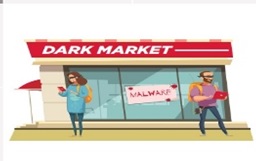 However, if you want a high-end kit that can do things like bypassing antivirus software, you will have to spend thousands of dollars. Prices for renting a DDoS bot also vary, but you can expect to pay around $300 per month. As for hiring a hacker, the cost will depend on the person’s skill set. You can expect to spend thousands of dollars on hiring a skilled hacker.
However, if you want a high-end kit that can do things like bypassing antivirus software, you will have to spend thousands of dollars. Prices for renting a DDoS bot also vary, but you can expect to pay around $300 per month. As for hiring a hacker, the cost will depend on the person’s skill set. You can expect to spend thousands of dollars on hiring a skilled hacker.
Those who want something more powerful can shell out tens of thousands of dollars for state-of-the-art software. What you pay for will depend on what you plan to do with it. The most basic malware kits are simple enough to use, even for those with no coding experience. However, they lack the power and flexibility of more advanced options.
Those looking to undertake more severe attacks can purchase more sophisticated malware kits for around $1,000. Keep in mind that these prices do not include the cost of buying a remote server to host the malware.
However, these products are unreliable, and one can detect them with antivirus software. For more severe attacks, buyers will spend up to $50,000 on malware kits that are harder to see. The kits also come with support, so customers can ask the seller for help if they have any issues with the product.
It makes it easier for people to commit crimes and harder for police to catch criminals. Police must understand the technology and software used by cybercriminals to fight back and keep up with criminals. There are a few ways to detect CCAAS. You can use pattern recognition, analytical, and artificial intelligence software. AI has been used to help fight Cybercrime for a few years, but it is now reaching a point where it can help police fight crime.
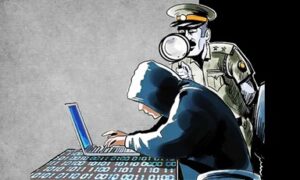
There are a few things that police officers can do to help the people they serve to protect themselves from the dangers of CCAAS. First, they can provide a solid working relationship with the community they serve. Policing is a job that requires a lot of trust and respect between officers and the public. One of the best ways to combat CCAAS is to have a strong relationship with the people of the police service and create awareness about cybercrime and the services which cybercriminals are providing so that they can guard themselves or at least take precautions from becoming victims of such cyberattacks.
The next crucial step is for law enforcement agencies to acknowledge and commit to combating the problem within the ranks. By increasing awareness and starting conversations about the issue, law enforcement agencies can help to mitigate the threat of CCAAS. Agencies can also train officers to deal with cyber criminals who either sell cybercrime as a service discreetly or provide cybercrime service covertly for other reasons.
Lately, the rise of cybercrime has become a big problem for governments, businesses and ordinary people. Cybercrime using computers and networks such as hacking, identity theft, and fraud are rising. While it is difficult to quantify the exact number of cybercrimes, various agencies monitor this problem. There are reports that the number of cybercrimes committed in 2016 was more than 10 million worldwide. In addition, the rising population of Internet users combined with the easy access to malicious codes has created an environment conducive to cybercrime. As a result, more and more people worldwide are becoming targets for cybercriminals. To combat this growing threat, law enforcement agencies have stepped up their efforts to combat cybercrime by offering additional services such as consulting on cybersecurity strategies and training hackers. While law enforcement can certainly help stop cybercriminals in their tracks, they cannot do it alone. The community also has a role in fighting against cybercrime by educating themselves about security threats and not clicking on suspicious links or attachments. We can all make a difference in protecting our digital safety by working together!

If cybercrime as a service ecosystem is left unmonitored and unregulated, it can cause immense damage and loss to individuals. There are several ways to address the challenges of CCAAS. The first step is recognising that CCAAS is a growing threat to public safety and national security. Second, law enforcement must be able to investigate threats, assess the risk, and determine if the person poses a threat to public safety. Third, law enforcement must share information with other agencies relevant to their investigations to ensure that those agencies have the information they need to make informed decisions about the risk posed by cybercriminals in their communities.

Moreover, there are still many unanswered questions surrounding CCAAs, such as:
> How much money is being stolen by CCAAS; which types of crimes are being committed?
> How often CCAAS is occurring?
> How effective law enforcement is in dealing with the problem?
> What can be done to mitigate the threat?
Without a clear understanding of these issues, law enforcement will struggle to combat CCAAS.
Finally, to keep cyber crime at bay and protect citizens from its negative impacts, it is necessary to have a comprehensive law enforcement framework in place. Countries that currently lack such a framework or do not have a robust one can use this assessment model to improve their law enforcement efforts.,
> How dependable and secure the websites and systems are where the public or private data gets hosted ?
> How easy it is to report cybercrime and get a response?
> How quickly problems are solved when they get reported?
> How transparent the law enforcement is in its operations.?
The extent to which law enforcement works with the public in solving cyber crimes and addressing the issues that lead to them. The level of public trust in the law enforcement agency and its officers.
 Dr. K. Jayanth Murali is an IPS Officer belonging to 1991 batch. He is borne on Tamil Nadu cadre. He lives with his family in Chennai, India. He is currently serving the Government of Tamil Nadu as Director General of Police, Idol Wing CID.
Dr. K. Jayanth Murali is an IPS Officer belonging to 1991 batch. He is borne on Tamil Nadu cadre. He lives with his family in Chennai, India. He is currently serving the Government of Tamil Nadu as Director General of Police, Idol Wing CID.
